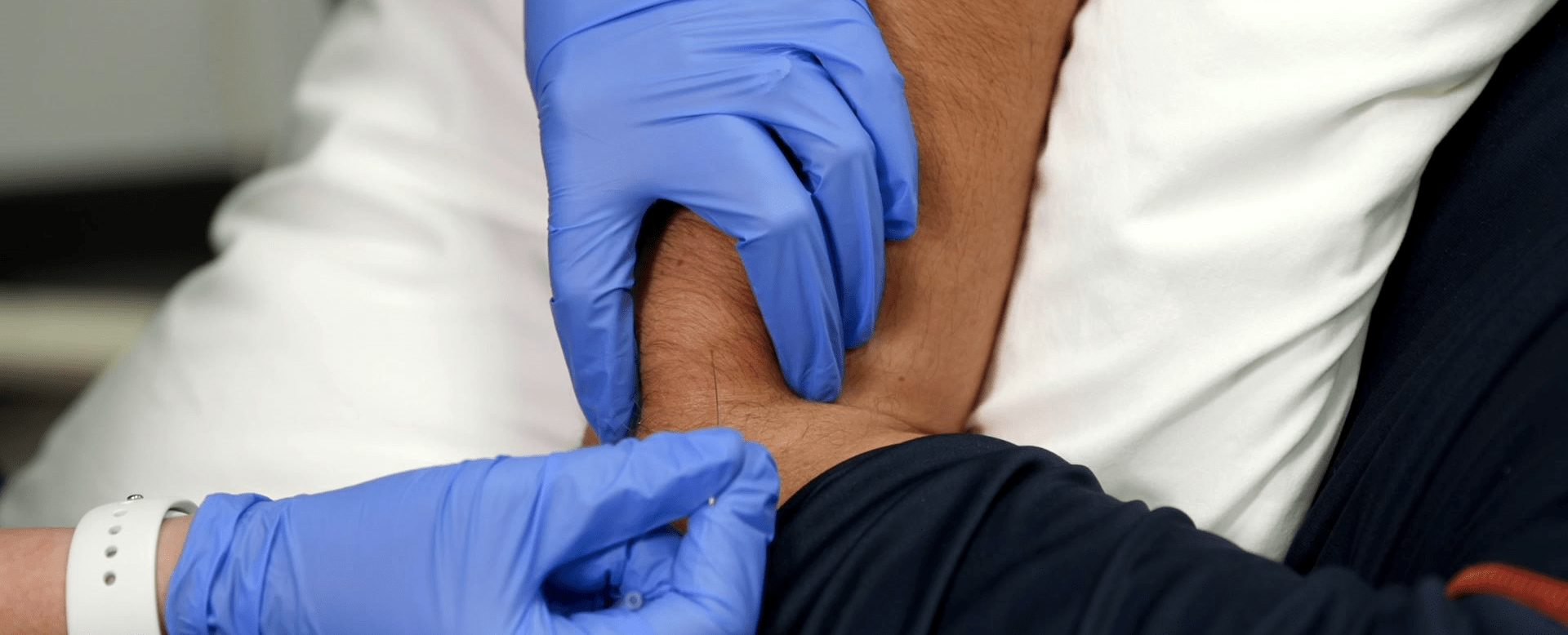What is dry needling?
Trigger point dry needling is a skilled intervention that uses a thin filiform needle to penetrate the skin and stimulate underlying myofascial trigger points, muscular and connective tissues for the management of neuromusculoskeletal pain and movement impairments. “Dry needling” is a very effective form of therapy that is growing in popularity and usage.
Trigger point dry needling is used as a component of a comprehensive plan of care to assist with restoring function and movement. Dry needling should result in a more efficient progression to corrective exercises to improve activity limitations and participation restrictions.
What is a trigger point?
A trigger point is a muscle dysfunction, such as knotted or hard muscle tissue. “Active” trigger points are currently causing pain, while “latent” trigger points are not causing pain currently but can be set off to generate the pain. Trigger points can also affect the motor patterns so that muscle firings or mechanics are not normal. Trigger points can be superficial (skin level) or deeper (intramuscular).
Who does dry needling benefit?
For patients with deeper, intramuscular trigger points, dry needling can be quicker and more effective than traditional physical therapy treatments. This is especially true if there is a very localized muscle “hot spot.” Dry needling can help relieve the pain quicker and more effectively than manual therapy.
Conditions Treated
- Headaches
- Shoulder pain
- Elbow pain
- Neck pain
- Back pain
- Hip pain
- Knee pain
- Foot and ankle pain
- Scar tissue
What kind of needles are used?
Dry needling uses filiform needles (solid, sterile and single use), similar to those used in acupuncture. It’s called “dry” because the needle isn’t injecting a fluid – unlike, say, a needle used to inject a vaccine.
Are there side effects to dry needling?
Dry needling side effects in general are just like any other needle stick: There’s the standard risk of bleeding, bruising, or infection. The most typical side effect is soreness, as if the muscle had a very intense workout.
Is dry needling the same as acupuncture?
While both disciplines use the same type of filiform needle, the similarities end there. Dry needling is based on Western medicine to treat a specific part in a muscle that’s dysfunctional. Acupuncture is based on Eastern medicine and uses needles superficially (at skin level) to help assist with the flow of energy, or chi, in the body.
Why a physical therapist
Due to our high level of education on the musculoskeletal system and pathologies associated with this system, we are the ideal providers of this modality. Selection of these patients requires high levels of clinical reasoning in order to identify potential patients which may benefit based on our examination and review of systems, while screening out patients which may not be appropriate.
